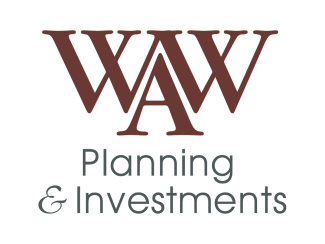What To Make Of The High-Frequency Trading Boom
My brother was visiting from China, and we got into a discussion of the stock market and the impact of high-frequency trading, or HFT.
Oh, the things we discuss after a good dinner and copious amounts of wine. Does HFT help or hurt individual investors? Is the market "rigged" against small investors?
Electronic-trading systems were introduced in the 1990s. These programs executed client orders anonymously based on a set of rules. They brought together supply and demand on the exchanges. The result was a decrease in execution time and expense. Automated trading on stock exchanges prevented misuse, strengthened confidence in the markets, increased liquidity, and ultimately improved capital allocation.
According to Nasdaq, "There are two types of high-frequency trading. Execution trading is when an order (often a large order) is executed via a computerized algorithm. The program is designed to get the best possible price. It may split the order into smaller pieces and execute at different times. The second type of high-frequency trading is not executing a set order but looking for small trading opportunities in the market."
There is little disagreement that execution trading has improved market efficiency and lowered trading costs. Another benefit is the narrowing of price "spreads." When products are traded, there is a difference between what people are willing to pay to buy the position (ask) and what they are willing to receive when they sell (bid). This is called the spread. Large orders from institutional investors can create a temporary price blip as the market tries to absorb the order. Proponents assert that HFT narrows this bid/ask spread.
While there are substantial benefits to electronic trading, there are ethical concerns. Critics contend that HFT has the potential to accentuate and accelerate market movements. There is also a concern about market manipulation and regulators' inability to anticipate and identify predatory practices.
But the primary controversy is around the subset of trades that exploit pricing discrepancies, also known as financial arbitrage. The advantage for HFT comes from exploiting small disparities in bid/ask spreads between exchanges, momentary inefficiency in pricing, and momentary changes in stock price trends. This is seen by many as unfair.
Burkhard Varnholt, deputy chief investment officer at Credit Suisse, looks askance at high-speed traders. They now are responsible for nearly half of all U.S. equity trading, Varnholt said, "but they hardly create any market liquidity. They often pursue proprietary investment strategies, but they are concerned with neither price nor value. Their investments are low-risk, and yet they increase overall market volatility. High-frequency traders are considered free riders of an existing exchange infrastructure, but they are subject to hardly any regulation."
A common refrain among critics is that HFT is unfair to small investors.
Michael Thomsett, an author who writes books on investing, agrees it is unfair but doesn't believe it affects what individual investors can earn in their portfolios.
"While HFT firms make billions of dollars, it is usually at the expense of other traders and not [individual] investors," Thomsett said. "History is filled with stories of early adopters profiting from advances in technology or strategy at the expense of others. That's the way economies work. Eventually new entrants emerge, profit margins are squeezed and then we are on to the next big thing."
Even so, there are systemic reasons small investors do not come out ahead. Vanetta Logan from the YouTube show "Nailed Ir has a great video about HFT and concludes with investing practices that hurt more than HFT.
These include investors' making poor choices based on following market headlines and reading newsletters, having too few options in their 401(k), and falling victim to predatory financial sales professionals.

